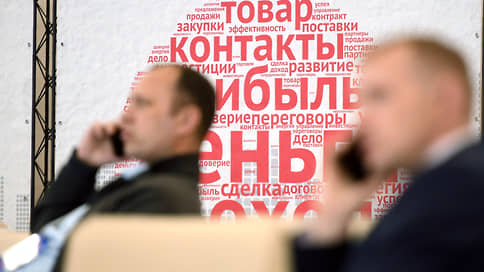Public procurement is increasingly frustrated due to a mismatch between supply and demand
[ad_1]

Data on government procurement in the first half of 2023 indicates that, despite increased competition in government procurement, it has not yet been possible to satisfy the demand of customers: the number of failed purchases has sharply increased in the sector. Similar trends were recorded in the open part of the procurement of state-owned companies. The data may indicate that, despite the increase in the number of suppliers, their products do not yet meet the needs of customers – in terms of price and quality, which was also reported by large private companies that tried to replace departed suppliers with domestic ones.
The volume of purchases of state customers under 44-FZ in money increased from 5 trillion rubles. in the first half of 2022 to 5.4 trillion rubles. in the same period of 2023 (4.6 trillion rubles in 2021), follows from the analysis of the Roseltorg electronic platform of the data of the Unified Information System in the field of procurement. In quantitative terms, the changes are insignificant: the number of purchases increased from 1 million to 1.2 million procedures (1 million in 2021). The average contract price thus decreased – from 5 million to 4.5 million rubles. The level of competition in the first half of 2023 increased – on average, there were 2.39 applications per purchase against 2.2 in the first half of 2022 (in 2021, before foreign suppliers left the market, – 2.66 applications).
However, despite the gradual restoration of supply in the state order, the needs of customers remain unsatisfied: the number of failed purchases by July 2023 exceeded 254 thousand after 45.7 thousand in 2022 (73.5 thousand in 2021). The surge in such purchases falls on the second quarter (206.8 thousand), but analysts found it difficult to explain it. Meanwhile, the massive failure of contracts against the backdrop of growing competition may indicate a mismatch between supply and demand. Similar problems are observed in the private sector. Attempts by large businesses to replace departed foreign suppliers with small businesses are more successful in supplying “simple” items and less likely to meet the needs of industrialists as they become more complex. Purchasing data shows that the emergence of new suppliers is not an indicator of market recovery: their products are not yet competitive. By industry, this process looks like this: at competitions for the supply of medicines, the number of failed procedures increased from 283 to 7.3 thousand in annual terms (the level of competition – from 1.28 to 1.36 applications), in the supply of electronic and optical equipment – from 427 to 5.2 thousand (2.5 and 2.67 applications), chemical products – from 165 to 2.4 thousand (2.45 and 2.77), in construction – from 258 to 6.8 thousand .(2.67 and 3.53).
Part of the failed competitive purchases may result in the signing of a contract with a single supplier, but in general, the number of such contracts even decreased from 347.8 thousand to 322.6 thousand, and their volume – from 2.2 trillion rubles. up to 1.7 trillion rubles Meanwhile, the number of initially non-competitive purchases from a single supplier increased – from 389 to 3.3 thousand, and their volume – from 744.7 million rubles. up to 1.7 trillion rubles, which may be due to the development of the “purchase from the shelf” mechanism – the placement by suppliers on trading floors of offers for the supply of goods and their selection without the usual procurement procedure.
The data available to analysts on the purchases of state-owned companies (223-FZ) is still indicative. According to the results of the first half of the year, their volume amounted to 3.8 trillion rubles. after 4.3 trillion rubles. in 2022, but these volumes are not comparable with the pre-sanctions year 2021 – 572.4 thousand purchases for 10.4 trillion rubles. Since March 2022, state-owned companies, we recall, have been able to hide part of the purchases due to sanctions risks – this can be up to half of all purchases of the state JSC, but data on them is not available even to the state (see “Kommersant” dated August 3, 2022). Since April, the Ministry of Finance had to return procurement data to the “closed loop” of the EIS, but not for external observers. In the open procurement segment of state-owned companies, the trends are similar to 44-FZ – a formal increase in the level of competition and an actual increase in failed procedures.
[ad_2]
Source link






